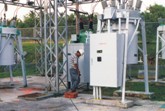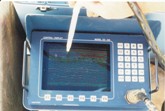




| Environmental | |||||
| Engineering |
| Gps |
| All the information you need to get the best car GPS |
| Seismic |
 Home Home |
 Services Services |
 Methods Methods |
 Uxo Uxo |
 Contact Us Contact Us |
 About us About us |
Environmental Services
|
Environmental geophysical services can be an indispensable component to many types of environmental investigations. The non-invasive nature of environmental geophysical methodology is an important consideration when evaluating the financial cost to a project and physical risk to site personnel. Some typical reasons for considering a geophysical survey include:
FPM Geophysical & UXO Services typically uses at least two of the following methods: Key Benefits Typical Objectives
|


